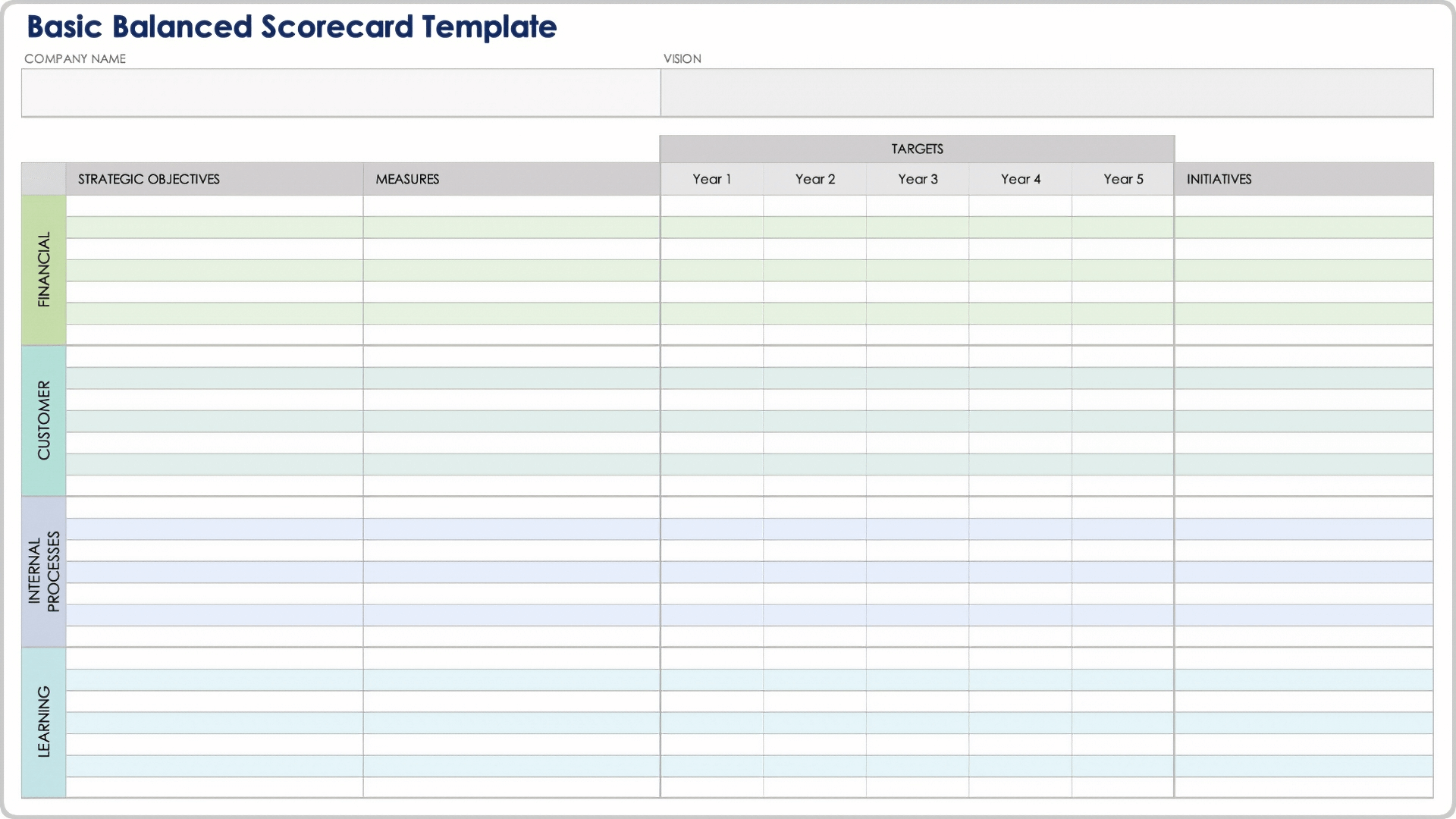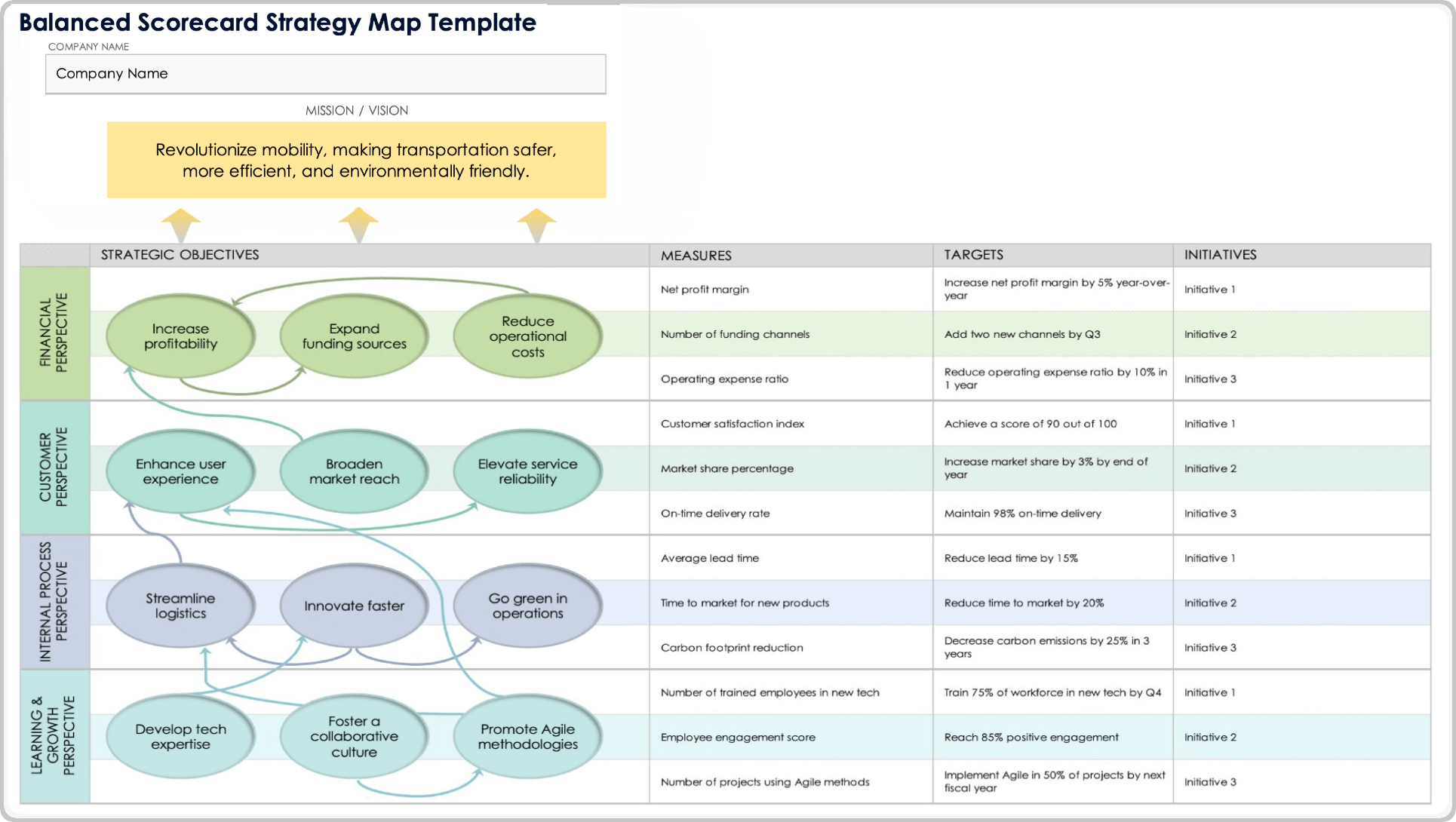Basic Balanced Scorecard Template
Strategic planners can use this template to align company activities with broader strategic vision and objectives. The template allows you to set five-year projections for targets and to record corresponding initiatives for long-term planning. It shows target progress over time, such as annual sales growth or new customer acquisition, and integrates financial, customer, internal, and innovation metrics.
Download Template for
Excel
Microsoft Word
PowerPoint
Adobe PDF
Google Docs
Google Sheets
Google Slide











